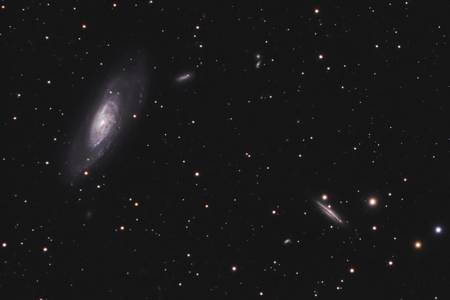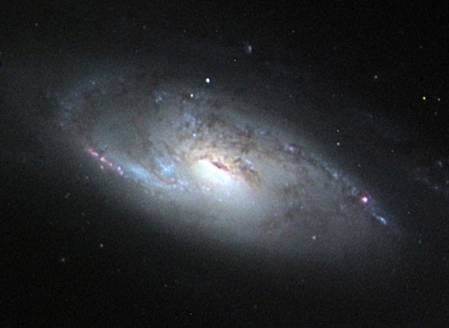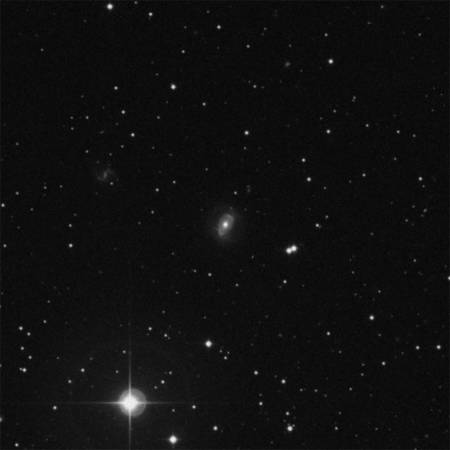Results from Two Research Teams Improve Direct Distance Measurements and Strengthen the Creation Model, Part 2 (of 2)
As discussed last week, direct distance measurements to objects and locations in the cosmos not only helps us better understand the universe, they also produce evidence for the biblically predicted big bang creation model.1 Recent work by two different research teams produced evidence that places this model on even surer footing. One team—led by Mayumi Sato of the University of Tokyo—produced the best direct distance measurement to the center of the Milky Way Galaxy (MWG) to date2 by measuring with extreme precision the positions and distances to several water masers in W51, a massive star-forming region near the tangent point of the MWG’s Sagittarius spiral arm. (See last week’s article for further discussion of this research.)
The other team—led by James Braatz of the National Radio Astronomy Observatory—also produced an important measurement. They determined thefirst-ever direct distance measurement of a galaxy far enough away from Earth to be in the “Hubble flow,”3 that is, far enough away so that the galaxy’s velocity component attributable to the expansion of the universe predominates the component resulting from gravitational interactions with nearby galaxies.
Such a measurement is important because until now astronomers’ measurements of the cosmic expansion rate have been achieved through indirect methods only. These indirect methods all depend upon assumptions about the physical conditions of the galaxies or their stars. Only the direct method is assumption free and, therefore, immune to big bang skeptics’ criticism that the physical conditions are not adequately understood.
Determining the Expansion Rate
Previous teams of radio astronomers had performed direct distance measurements on a galaxy (labeled NGC 4258, see figure 2) as far away as 23 million light-years.4 Yet even at 23 million light-years away, this galaxy is too nearby to yield an unambiguous measurement of the cosmic expansion rate.


Astronomers used a water maser source in NGC 4258 to produce a direct geometric determination of the galaxy’s distance from Earth (= 23 million light-years).
Image credit: top: Hewholooks; bottom: NASA
About a year and a half ago, Braatz and colleague Nicole Gugliucci, discovered a strong water maser source orbiting about the nucleus of the Seyfert Galaxy UGC 3789 (see figure 3).5 Following this discovery, Braatz assembled a team to perform the necessary observations on the water maser in order to gain a direct distance measurement of the distance to UGC 3789. The team found that the distance to UGC 3789 = 162 ± 23 million light-years.6 The team plans to continue making measurements on the water maser in UGC 3789 with the goal of reducing the probable error in the distance determination by a factor of two.

Owing to the presence of a strong water maser source in UGC 3789 (image center) astronomers have been able to make a direct geometric distance determination of the galaxy. The measurements show that UGC 3789 is 162 million light-years away from Earth.
Image credit: NASA/ESA/STScI.
Agreeing Values
Based on the direct distance measurement for UGC 3789, Braatz’ team determined that the expansion rate for the universe = 69 ± 11 kilometers per second per megaparsec (one megaparsec = 3,258,000 light-years). This value agrees well with the best indirect determination of the cosmic expansion rate, namely the Hubble Key Project, which established a value of 72 ± 8 kilometers per second per megaparsec.7 The new value agrees even more closely with measurements based on gravitational lensing, a geometric method that depends on certain measureable properties of the lensing galaxy. The gravitational lensing determination yielded a value for the cosmic expansion rate = 70.6 ± 3.1 kilometers per second per megaparsec.8 In combination with the value derived from the Wilkinson Microwave Anisotropy Probe (WMAP) measurements of the spatial temperature differences in the cosmic microwave background radiation, this value produced a cosmic expansion rate = 69.7 ± 4.9 kilometers per second per megaparsec.9
All of these values represent stunning confirmations of the reliability of astronomers’ distance measurements to the center of the Milky Way Galaxy and to the galaxies in the Hubble flow. They also further ensure that all humanity can enjoy much greater security in the Bible’s accuracy and reliability in predicting future scientific discoveries such as the universe’s expansion history, the cosmic creation event, and the time back to the cosmic creation event. These new measurements on W51 and UGC 3789 strengthen the conviction that we live in a universe created many billions of years ago.
Endnotes
- Hugh Ross, A Matter of Days (Colorado Springs: NavPress, 2004), 139–48.
- M. Sato et al., “Trigonometric Parallax of W51 Main/South,” Astrophysical Journal 720 (September 10, 2010): 1055.
- J. A. Braatz et al., “The Megamaser Cosmology Project. II. The Angular-Diameter Distance to UGC 3789,” Astrophysical Journal 718 (August 1, 2010): 657–65.
- A. L. Argon et al., “Toward a New Geometric Distance to the Active Galaxy NGC 4258. I. VLBI Monitoring of Water Maser Emission,” Astrophysical Journal 659 (April 20, 2007): 1040–62; E. M. L. Humphreys et al., “Toward a New Geometric Distance to the Active Galaxy NGC 4258. II. Centripetal Accelerations and Investigation of Spiral Structure,” Astrophysical Journal 672 (January 10, 2008): 800–16.
- J. A. Braatz and N. E. Gugliucci, “The Discovery of Water Maser Emission from Eight Nearby Galaxies,” Astrophysical Journal 678 (May 1, 2008): 96–101.
- J. A. Braatz et al., 657.
- Wendy L. Freedman et al., “Final Results from the Hubble Space Telescope Key Project to Measure the Hubble Constant,” Astrophysical Journal 553 (May 20, 2001): 47–72.
- S. H. Suyu et al., “Dissecting the Gravitational Lens B1608+656. II. Precision Measurement of the Hubble Constant Spatial Curvature, and the Dark Energy Equation of State,” Astrophysical Journal 711 (March 1, 2010): 201–11.
- S. H. Suyu et al., 201.




